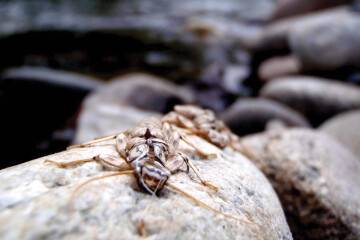Fly Fishing in the Wind
Living in Montana we are lucky to be surrounded by beautiful rivers, amazing mountain peaks, and rolling fields. However, there is one downside to living in the gorgeous topography that exemplifies the greater Southwest Montana area…Wind. Nobody likes a blustery day, let alone when you’re trying to catch fish on one of the many pristine rivers in the area. Throw in trying to catch fish with a fly rod in heavy wind with sharp hooks flying around your head and you’ve got a recipe for disaster, or at least a day laced with profanity. Fly anglers are a pretty superstitious group of people and just like the wizards in Harry Potter won’t say the name Voldemort in hopes that he won’t return, we’ve gotten to the point of not saying the word “wind” in hopes of not summoning the weather gods into pummeling us with heavy gusts. Most anglers refer to the wind as “W” or some other derogatory term for the “W.” While fishing in wind is not nearly as enjoyable as fishing on a calm day you can still get out there and have some fun with a few tweaks to your equipment, techniques, and water choice.

Most trout anglers across the country agree that a five weight fly rod is the best all-around rod size for trout. Here in Montana, or at least at Montana Troutfitters, we recommend a six weight fly rod for your all-around fishing stick, or your first rod. We recommend the six weight because in reality, you’re going to be fishing in the wind more often than not. The added power that a six weight has allows you to punch casts through the wind better than if you were to use a smaller, lighter rod. Along with heavier, faster action rods, fly lines that are over weighted also help to cut the wind and allows you to turn your bugs over more efficiently in the wind. There are lines that are designed to be a half weight heavier, or you can use a standard fly line and go one line size heavier than the rod. Again, this helps load the rod down to the butt section where you’ll be able to utilize the most powerful section of the rod and get your flies where they need to be. Shortening your leaders from the standard nine feet to seven and a half feet also helps turn flies over in breezy conditions.
Even with the right equipment, casting in heavy winds can be extremely frustrating and if you’re using big flies, it can be downright scary. If you’ve never learned the double-haul cast, spend some time on the grass or your local pond getting the cast down because it is the most effective cast when fishing in the wind. The double-haul is essentially what the name sounds like. You use your line hand to load the rod on you backcast and then again use the same line control hand to load the rod on your forward stroke. Before you cast, start with your line control hand next to your hand gripping the cork of the fly rod. As you pick your rod up to cast give a sharp pull down with your line hand. This will load the rod further than just picking the line up off the water. As the line extends out behind you bring your line hand back up to the same position right next to your rod hand. As your rod tip flexes past the mid-section of the rod and your line becomes tight make another sharp downward pull with your line hand as you push forward with the rod. This again loads the rod further into the butt section and generates a much higher line speed which will help punch your flies through the wind. The most difficult aspect of the double-haul is bringing your line hand back up to your rod hand after the first haul. The second part that gets people is the timing of the second haul. If you’re having trouble with the timing, watch your line unfurl behind you and make the second haul as you see the fly tighten at the end of your backcast.

If you’re fishing from a boat, make sure that your flies are not going over the center of the boat. Your guide or your buddy rowing will appreciate it. This can be accomplished a few different ways. If you’re right handed and in the front of the boat casting toward the right bank with a downstream wind, hold your casting arm across your body with your rod hand next to the far side of your face. Pick your line up and stop your cast as your hand reaches your ear, then cast forward ending a foot or two past your face. This keeps the line in front of the boat and away from the rowers head. If that’s too difficult to master, simply cast away from the bank until you’re ready to finish your cast and turn back to the bank finishing on what would have been your backcast. In the same situation from the back of the boat I like to cast sidearm. This again will keep the hooks towards the back of the boat and because the loop in your cast is parallel and low to water, the line won’t be as susceptible to gusts of wind.
Another technique to up your chances of catching fish when it’s windy is the type of fishing you choose to do. Casting a size 18 dry fly into a feeding lane with 40 mph wind gusts is next to impossible, not to mention most hatches will be blown off the water making dry fly fishing difficult and unproductive. Pushing a big streamer into heavy winds can be effective, but you’ll have a very sore shoulder by the end of the day and big hooks whipping around in the wind is scary for everyone involved. If you’re nymphing, throwing two flies and a bobber usually results in a lot of tangled flies. The good thing about fishing with an indicator is that you’ll get the longest drifts which also means you’ll be casting the least of any of the other techniques. When it’s impossibly windy sometimes your best bet will be putting a single fly such as a bugger, stonefly, or small streamer underneath an indicator. Minimal casting, less flies to get tangled, and longer drifts will help mitigate high winds and up your chances of catching fish.
In the end, if you check the weather reports and see that Livingston will be blowing 40+ mph all day, choose a smaller piece of water. It’s a heck of a lot easier to make a cast across a 20 foot wide stream than trying to send your flies across the Yellowstone or Madison. Smaller creeks also usually have better cover than the bigger rivers, and if you head up into mountain streams there are usually canyons and trees you can find shelter in.
Wind is one of those things that is a part of fishing in Montana, with a little work on your cast and making the right choice of where to fish, you can still have an enjoyable and productive time on our local water! Don’t let it stop you from getting out there and enjoying the amazing fishing we have, but do be aware if you’re taking your boat out in windy conditions. Wind can be very dangerous when rowing our rivers. Heavy winds can push you into unwanted obstacles on the river and when winds are really strong, they have the potential to flip a boat in the right situation, so be safe, make smart decisions, and catch some fish!

